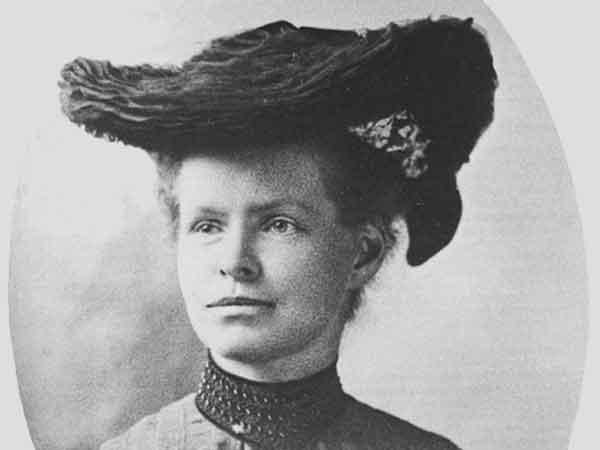Nettie Stevens 155th birthday: Three facts you probably didn't know about the pioneering female geneticist
She is credited with discovering the connection between chromosomes and sex determination

Your support helps us to tell the story
From reproductive rights to climate change to Big Tech, The Independent is on the ground when the story is developing. Whether it's investigating the financials of Elon Musk's pro-Trump PAC or producing our latest documentary, 'The A Word', which shines a light on the American women fighting for reproductive rights, we know how important it is to parse out the facts from the messaging.
At such a critical moment in US history, we need reporters on the ground. Your donation allows us to keep sending journalists to speak to both sides of the story.
The Independent is trusted by Americans across the entire political spectrum. And unlike many other quality news outlets, we choose not to lock Americans out of our reporting and analysis with paywalls. We believe quality journalism should be available to everyone, paid for by those who can afford it.
Your support makes all the difference.Near the turn of the century, Nettie Stevens made a discovery that likely changed the course of how scientists looked at the human chromosomes – that males are responsible for determining the sex of children.
To celebrate her 155th birthday on 7 July, Google launched a Doodle depicting Stevens peering through a microscope at the XY chromosomes that make one biologically male.
Stevens may not be a household name, but her contributions remain pivotal to the scientific community.
Here are five things you need to know about Nettie Stevens to honour her on her 155th birthday.
Stevens’ major contribution
Stevens is best known for her work studying mealworms. In her work, she found that male sperm carried both X and Y chromosomes, while females only carried X chromosomes in their eggs. From this, she determined that sex-determination must come from fertilisation of the egg from the male sperm.
Edmund Beecher Wilson reached the same conclusion independently of Stevens while working at Columbia University.
Stevens entered the science field at a late age
Born in 1861 in Vermont, Stevens was a teacher for a significant portion of her adult life. She taught mostly high school students in physiology and zoology, according to the Stanford Historical Society.
Stevens enrolled at Stanford University and moved to the West Coast in 1896, graduating three years later, and earned her master’s degree in 1900.
She earned her PhD from Bryn Mawr College in Pennsylvania in 1903.
Stevens died of breast cancer at 50
During her brief career in science, she managed to published about 40 papers and is widely regarded as having expanded the field of embryology and genetics. While working at Bryn Mawr, she was able to attain full researcher status, but succumbed to breast cancer on 4 May 1912, shortly before beginning her professorship.
“Her single-mindedness and devotion, combined with keen powers of observation; her thoughtfulness and patience, united to a well-balanced judgement, accounts, in part, for her remarkable accomplishment,” wrote fellow chromosomal scientist, Thomas H Morgan, who won the Nobel Prize for his work in 1933.
The Board of Trustees of Bryn Mawr College wrote at the time of her death: “At the time of her death she was considered the most eminent graduate of Bryn Mawr College and one of the leading biological investigators.”
Stevens once remarked to her student that their questions were always welcome “so long as I keep my enthusiasm for biology; and that, I hope, will be as long as I live.”
Join our commenting forum
Join thought-provoking conversations, follow other Independent readers and see their replies
Comments